Gion-matsuri 「祇園祭」 (Kyoto)
During the Heian period (794-1185), Kyoto suffered a series of natural disasters and plagues. As a form of appeasement to Mother Nature, a thousand years ago during a famine, purification ceremonies called “gouy-e” came into practice. Traditional spears were gathered from all over Japan as well as portable mikoshi (shrines) and offered to pay respect to the gods. One of the first of these ceremonies, Gion Matsuri, was held in the early Heian period at a time of devastating plagues.
The highlight of the modern festival is the “Yamaboko Junko” parade. The Yamaboko, or giant wooden floats, are assembled without nails in the traditional Japanese way. These towering floats are so massive that they require more than 40 men to pull them through the narrow, winding streets of Kyoto. Each float is considered to be a moveable museum of history.
Gion-matsuri Event Schedule
Location : Shijyo-Karasuma area (the nearest station is Kyoto subway Shijyo station.)
July 1: Opening
July 10: Omukae Chochin (lantern ceremony)
A procession with lanterns around Yasaka-Jinja Shrine 16:30 to 20:30
July 10 & 28: Mikoshi Arai (mikoshi shrine purification)
A sacred portable shrine procession Yasaka-Jinja Shrine to Shijo Bridge 18:00 to 20:30
July 14-16: Yoiyama festival
Lanterns on the Yamaboko floats are lit on
July 14-16: Byobu Matsuri (folding screen festival)
Folding screen will be shown to the public from the street of where floats are on stanby from 11:00 to 18:00
July 16: Kencha Matsuri (tea ceremony festival)
At Yasaka-Jinja Shrine from 9:00
July 17: Yamaboko Junko parade

Hoko float 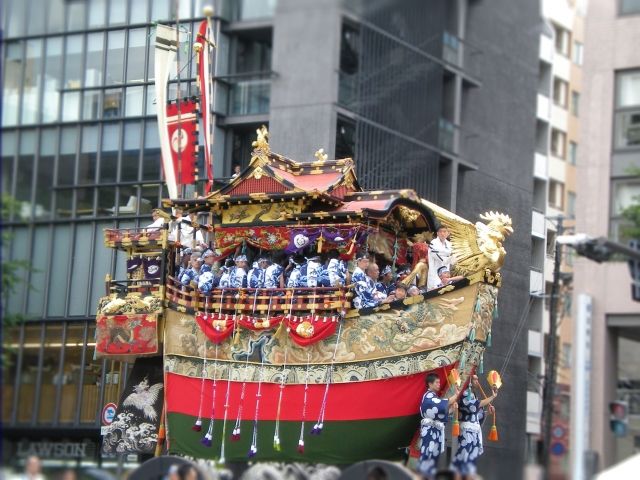
Fune-hoko float (ship) 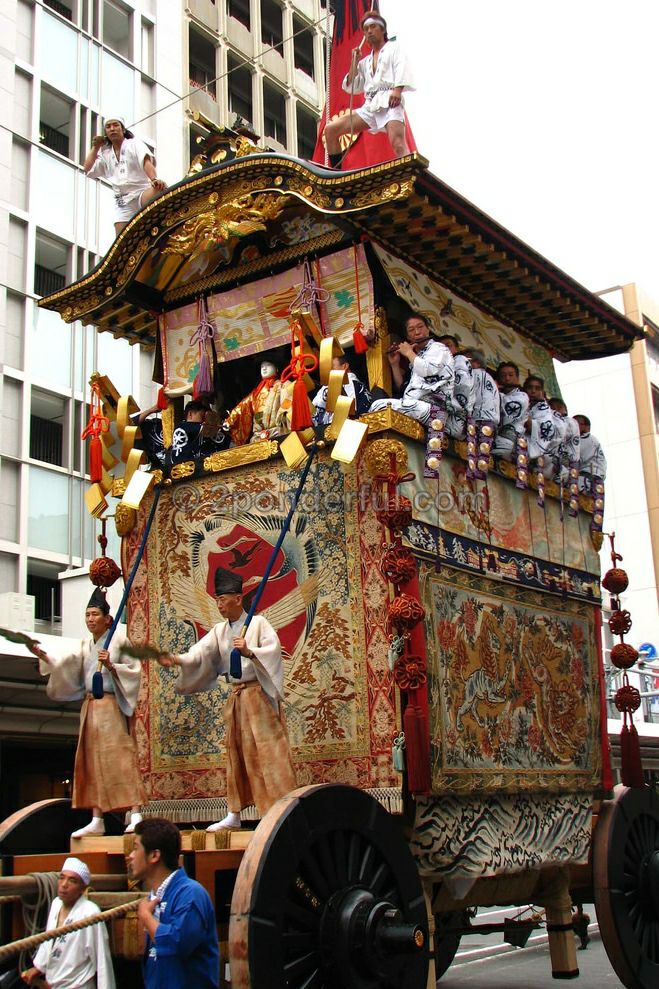
Yamaboko float
Yamaboko Parade course

July 24: Hanagasa Junko (flower umbrella and latter yamaboko parade)
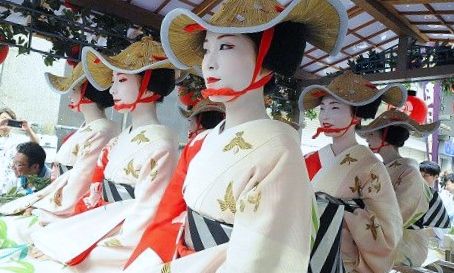
women with flower umbrellas 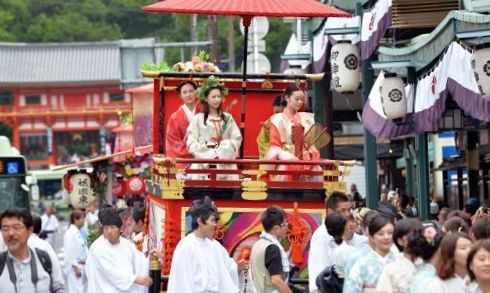
Hanagasa float 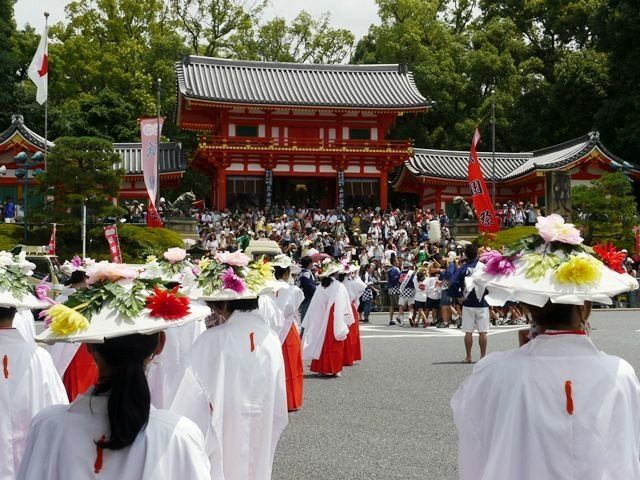
Hanagasa procession
Later Yamakasa Parade
Hanakasa Parade course
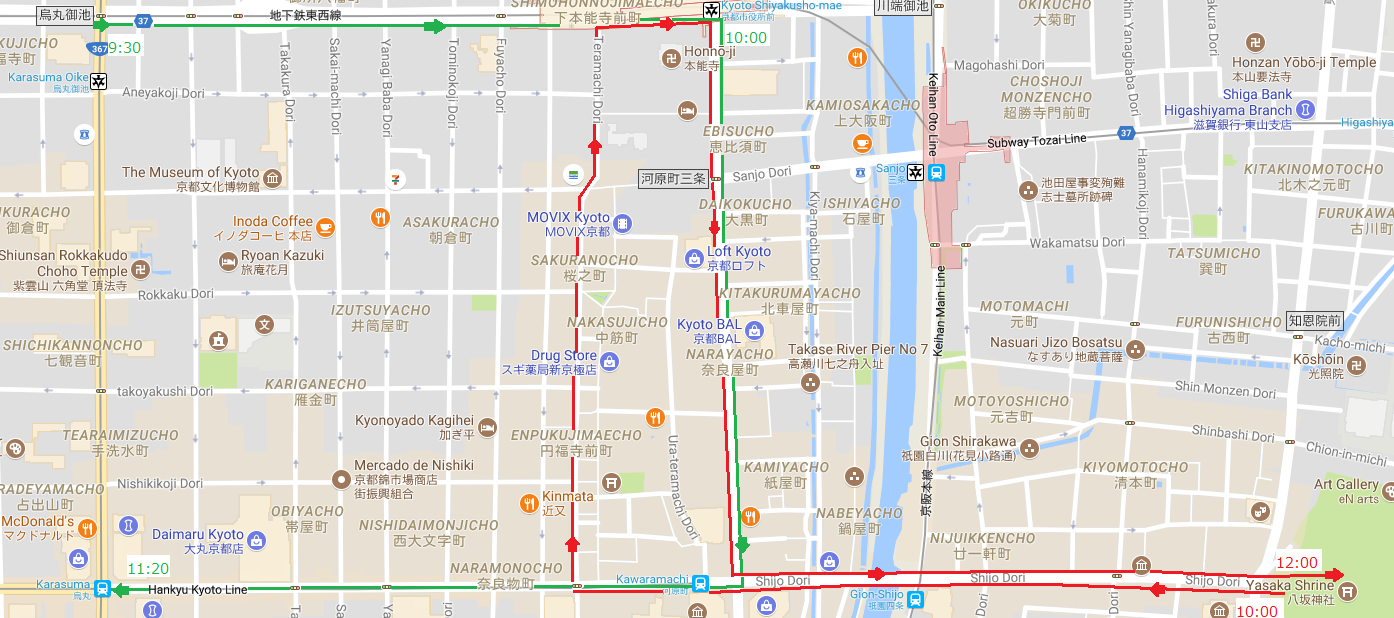
July 25: Kyogen Performance (comic theatrical show)
Kyogen, a comic theatrical show will be performed at Yasaka-Jinja Shrine from 11:00
July 31: Nagoshi-sai (summer purification ceremony and closing)
Worships and visitors walk through the big rhizome ring attached to the torii gate to purify
Tenjin-matsuri 「天神祭り」 (Osaka)
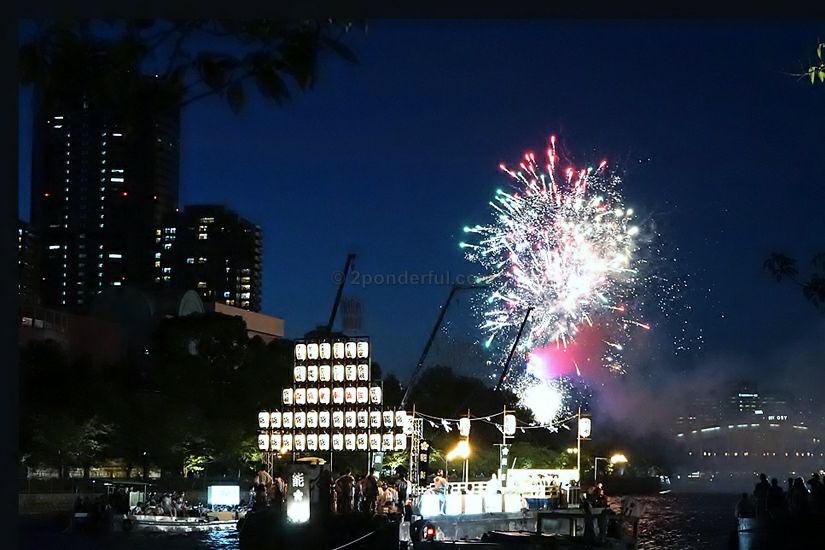
Tenmangu is a shinto shrine – founded in 949 – is popular with locals praying for academic success since it is devoted to the deity of learning: “Sugawara no Michizane”. The main celebration is held on the second day, July 25th and includes a land procession with “mikoshi” (portable shrines), a river procession with festival boats along the Okawa River and spectacular fireworks as night falls.
Date : July 24 and 25
Access : To Osaka Tenmangu, 5mins walk from Osaka Tenmangu station on JR Tozai line or Minamimorimachi station on the Osaka subway Tanimachi-line.
Kanda-matsuri 「神田祭」 (Tokyo)
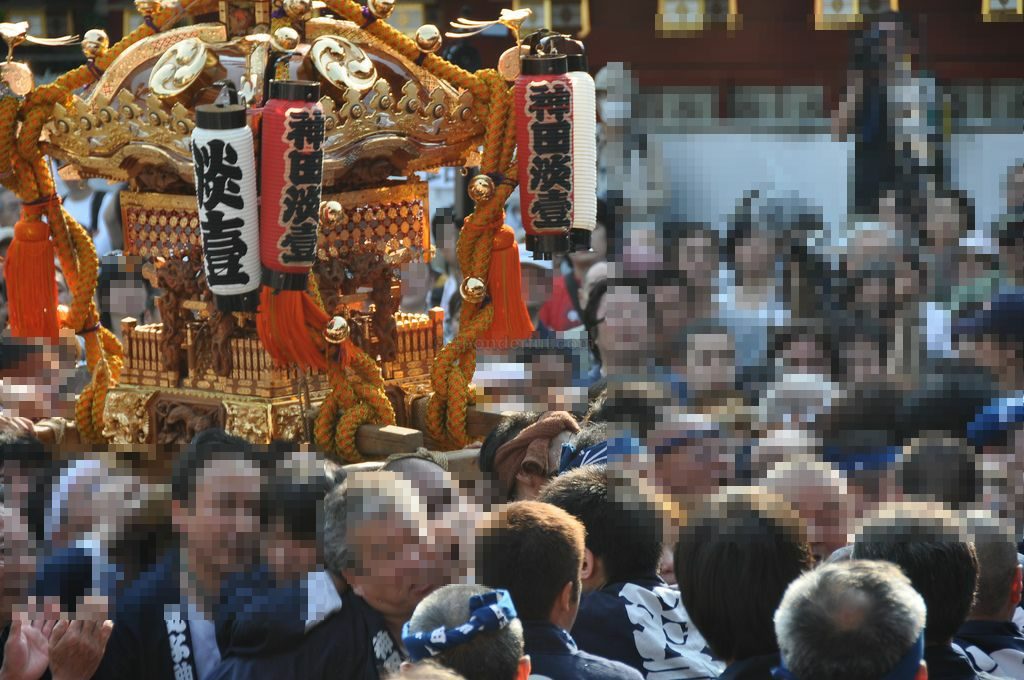
The festival consists of a week-long succession of ceremonial rituals and parades, centering around Kanda Shrine. The highlights are on May 11, when hundreds of people parade through Kanda and the surrounding area, bearing “mikoshi ” (portable shrines) and accompanied by shinto priests on horseback.
Kanda Matsuri is a Shinto festival originally held to celebrate Shogun Ieyasu Tokugawa’s famous victory at the Battle of Sekigahara.
Date : The festival only takes place on odd numbered years
Access : 5 mins walk from Ochanomizu Station on the JR Chuo Line